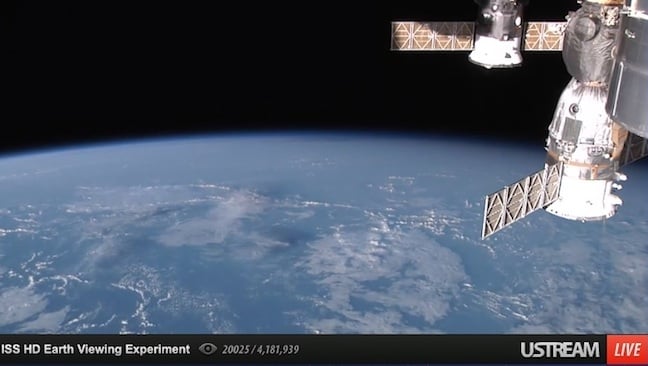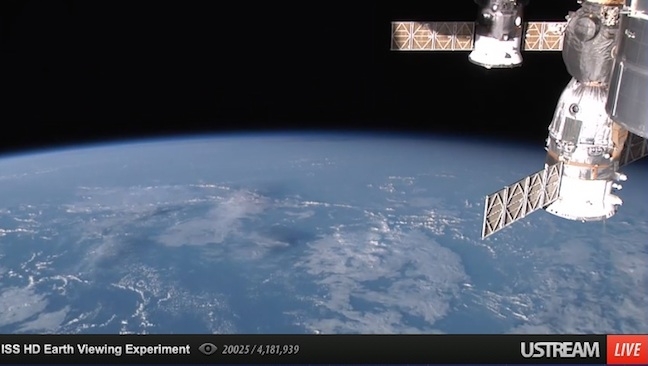

The View from Serendip: The High Definition Earth Viewing (HDEV) experiment aboard the International Space Station was activated on April 30 and the results are mesmerising, the experiment streaming live 480p video as the ISS orbits the Earth every 90 minutes.
For those that remember our story about the original Moon landing videos being wiped and the problems transmitting even monochrome SD video posed to engineers back in the 1960s, the colour images of the Earth ‘rotating’ under the ISS are astonishing.
No, scratch that, they’re pretty astonishing period.
The High Definition Earth Viewing (HDEV) experiment uses four off the shelf HD cameras and is being mounted with the primary objective of examining the space-based performance of the cameras — especially image degradation over time as a consequence of heightened radiation levels — and how they can be deployed in future ISS Program usage.
The HDEV integrated assembly is composed of four cameras, integrated Command and Data Handling, Avionics (Ethernet), and a power data distribution box that allows the integration of the payload's components interface to the ISS Columbus module. All electronics are enclosed in a pressurised box containing dry nitrogen to provide a level of protection from the space environment.
The four fixed cameras are positioned to capture imagery of the Earth’s surface and its limb as seen from the ISS, with one camera forward pointed into the station’s velocity vector, two cameras aft, and the last camera pointing nadir (ie straight down). The resulting video imagery is encoded into an Ethernet compatible format for transmission to the ground and further distribution.
The system operates one camera at a time in a repeating cycle (forward, nadir, aft — the aim being that the video ‘tracks’ a location on the surface). The only command required, is the initial “power on” command, which is performed by ESA’s Columbus Control Centre in Germany as scheduled by ISS Payload Operations.
If you alight on the site and all is black, that normally means that the ISS is on the night side of Earth; grey means it’s switching between camera or the Ku-band transmission is having problems (likely due to rain in Germany). But in our experience it seems to be working more often than not.
Anyway, kick back, relax, throw it onto the big screen with Airplay, and enjoy watching the Earth roll by your window.
ISS HD Earth Viewing Experiment (UStream site)
Earth Science and Remote Sensing Unit, NASA-Johnson Space Center (includes handy ISS positioning data from ESA)
Tags: Technology


Comments